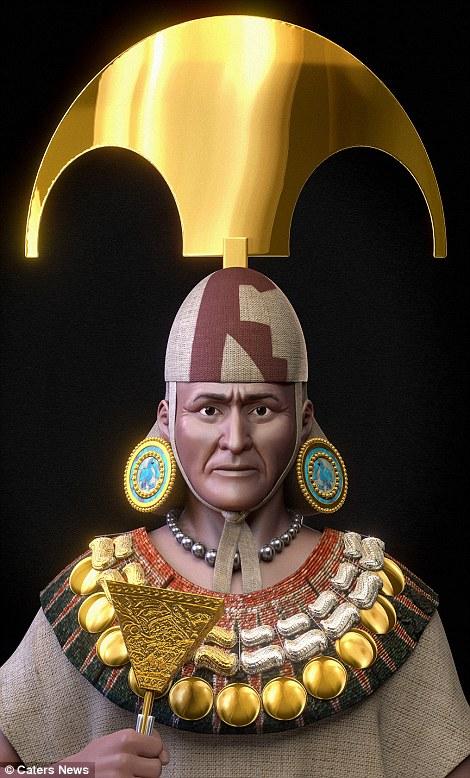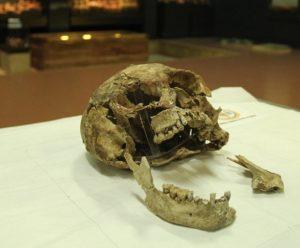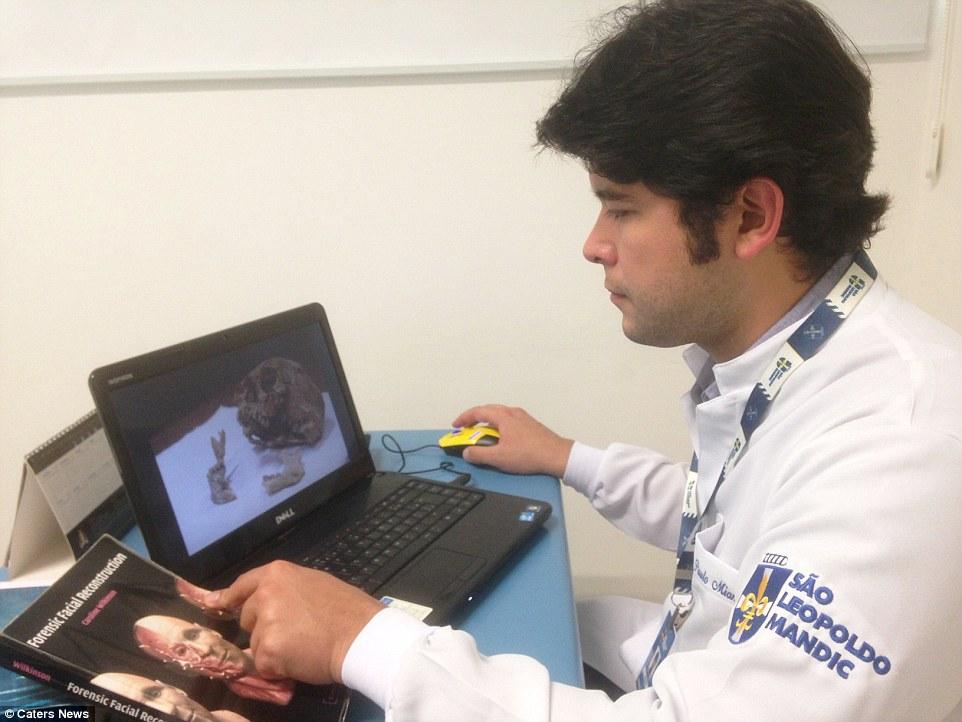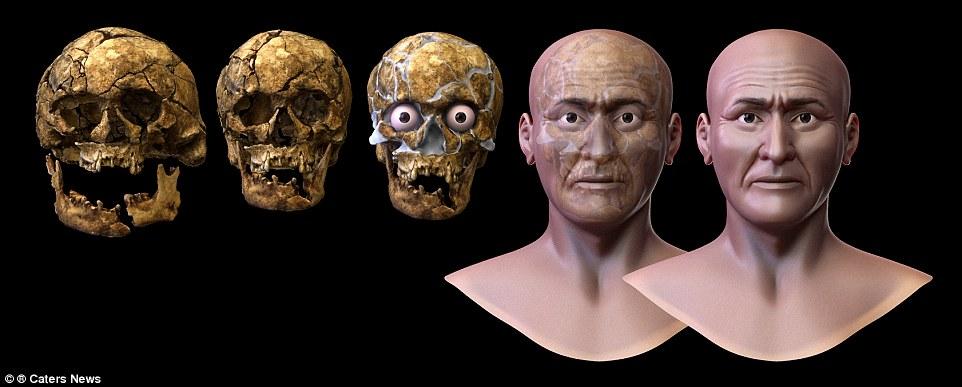 No one really knows what happened to the Moche civilization, which populated Peru between the years 1 and 800 CE. They were artistically and architecturally advanced, with several monuments and even pyramids still standing today as a testament to the culture’s skill and talent. They were also a rather violent people, as archaeologists have discovered by uncovering substantial evidence of human sacrifice. There are differing theories about what caused the civilization’s eventual collapse – some believe it was destroyed by civil war, while others suspect environmental calamity.
No one really knows what happened to the Moche civilization, which populated Peru between the years 1 and 800 CE. They were artistically and architecturally advanced, with several monuments and even pyramids still standing today as a testament to the culture’s skill and talent. They were also a rather violent people, as archaeologists have discovered by uncovering substantial evidence of human sacrifice. There are differing theories about what caused the civilization’s eventual collapse – some believe it was destroyed by civil war, while others suspect environmental calamity.
We may never know why the Moche people disappeared, but thanks to advanced 3D technology, we now have a good idea of what one of the society’s rulers looked like. In 1987, a tomb was excavated near the Peruvian town of Sipán; within it were several mummies along with some stunning artifacts. The most notable of the bodies in the tomb was that of a man adorned with ornate jewelry and ornaments, indicating that he was a high-ranking member of a ruling class. Dubbed the Lord of Sipán, the mummy was considered at the time to be one of the ten most important discoveries of the century.
Recently, a team of researchers went to work on digitally reconstructing the face of the Lord of Sipán. 3D computer graphics designers Cicero Moraes and forensic dentist Dr. Paulo Miamoto are best known to us as the “Animal Avengers,” a team of scientists who have repeatedly poured their time and effort into designing and 3D printing prosthetics for injured animals including a dog, a macaw and a tortoise. They’re also members of the Brazilian Team of Forensic Anthropology and Forensic Odontology, and they were commissioned by the Inca Garcilaso de la Vega University to take on the challenge of figuring out who, exactly, the Lord of Sipán was.
 And it certainly was a challenge. The Lord of Sipán was in pretty good shape for having spent the last 2,000 years underground, but you can’t hang out under accumulating layers of sediment for two long without getting a little beat up. According to Moraes, the skull was in 96 pieces when it was found, but that wasn’t the most challenging part – technicians at the Royal Tombs of Sipán Museum had actually glued the skull back together and pinned a plastic wireframe inside, a well-meaning effort that unfortunately meant it would be extremely difficult to recreate the skull’s original shape.
And it certainly was a challenge. The Lord of Sipán was in pretty good shape for having spent the last 2,000 years underground, but you can’t hang out under accumulating layers of sediment for two long without getting a little beat up. According to Moraes, the skull was in 96 pieces when it was found, but that wasn’t the most challenging part – technicians at the Royal Tombs of Sipán Museum had actually glued the skull back together and pinned a plastic wireframe inside, a well-meaning effort that unfortunately meant it would be extremely difficult to recreate the skull’s original shape.
Moraes did it, though, beginning by using photogrammetry to obtain a high-quality 3D scan of the artifact. He then uploaded the images into a computer and broke the virtual skull back into its fragments so he could rebuild it from scratch, which he did with the help of a template created from an image of an average male human skull. With forensic anthropological and anatomical advice from Dr. Miamoto, he pieced the digital fragments together, filling in the missing parts in gray.
The completed virtual model was then sent to Dr. Miamoto, who, funded by the Sao Leopoldo Mandic Faculty for Dentistry and Medicine, drew on his forensic knowledge to analyze the skull and formulate a theory on what the Lord of Sipán’s life – and death – may have been like.
“I was pleasantly surprised to find the Moche king had remarkably good oral health,” Dr. Miamoto told the Daily Mail. “He did have a few cavities but considering the period he lived in, his dental work showed he held a high economic position and was wealthy. During his era, it was typical for the majority of the peasants to use their teeth as tools. There was no evidence this person ever did this or did any hard work.”
 By examining specific areas such as the superciliary arch above the eyebrows and the thickness of the bone behind the ears, Dr. Miamoto was able to confirm that the skull belonged to a middle-aged man, probably between the ages of 45 and 55. He found no evidence of arthritis or any degenerative diseases, and surmised that the Lord of Sipán most likely died of natural causes.
By examining specific areas such as the superciliary arch above the eyebrows and the thickness of the bone behind the ears, Dr. Miamoto was able to confirm that the skull belonged to a middle-aged man, probably between the ages of 45 and 55. He found no evidence of arthritis or any degenerative diseases, and surmised that the Lord of Sipán most likely died of natural causes.
Meanwhile, Moraes continued his digital reconstruction to recreate the actual face of the ancient ruler, using the same kinds of techniques that have been used to reconstruct the ancient faces of everyone from an unknown Egyptian woman to Jesus Christ. Algorithms in Blender enabled him to apply layers of muscle and skin in appropriate thicknesses according to the structure of the skull, and features such as skin tone were based on those of other Peruvians. Finally, Moraes created digital images of the elaborate gold headdress, shield and other artifacts that were found with the mummy to recreate a fully adorned image of a warrior king.
According to Dr. Walter Alva, the archaeologist responsible for the 1987 discovery of the tomb of Sipán, the recreation is remarkably accurate, closely resembling the earliest known images of a Peruvian ruler. The same technology may eventually used to recreate the faces of the other members of the Lord of Sipán’s court, who were buried with him.
“The reconstruction of the features of the Lord of Sipán and the forensic anthropological analysis has allowed us to get closer to the face of our ancestors,” said Dr. Alva. “It has also been an important step in humanising and understanding more about the Moche Lord of Sipán.”
Discuss further over in the 3D Printed Mummy & Ancient Ruler forum at 3DPB.com.
Subscribe to Our Email Newsletter
Stay up-to-date on all the latest news from the 3D printing industry and receive information and offers from third party vendors.
You May Also Like
3D Printing Unpeeled: New Arkema Material for HP, Saddle and Macro MEMS
A new Arkema material for MJF is said to reduce costs per part by up to 25% and have an 85% reusability ratio. HP 3D HR PA 12 S has been...
3D Printing News Briefs, January 20, 2024: FDM, LPBF, Underwater 3D Printer, Racing, & More
We’re starting off with a process certification in today’s 3D Printing News Briefs, and then moving on to research about solute trapping, laser powder bed fusion, and then moving on...
3D Printing Webinar and Event Roundup: December 3, 2023
We’ve got plenty of events and webinars coming up for you this week! Quickparts is having a Manufacturing Roadshow, America Makes is holding a Member Town Hall, Stratafest makes two...
Formnext 2023 Day Three: Slam Dunk
I’m high—high on trade show. I’ve met numerous new faces and reconnected with old friends, creating an absolutely wonderful atmosphere. The excitement is palpable over several emerging developments. The high...

































